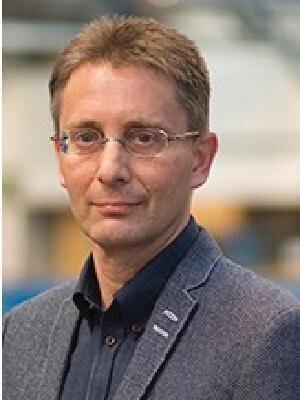Circular Product Design
The term “circular economy" denotes an industrial system that is, by design and intention, restorative, using resources either in a bio-cycle or in a techno-cycle – with all technical resources designed for multiple use cycles, at high quality. It is considered as a more sustainable alternative to the current “linear economy” and has recently gained the attention of governments, NGO’s, researchers and increasingly, large companies.
Powered by renewable energy, a circular economy can be fully sustainable from an ecological perspective. From the viewpoint of business, it also holds promise, as value is maintained for longer and a zero-growth scenario is avoided. However, unlocking this potential requires shifts in business models, changes in supply chain management, and new notions of ownership. Also, to fit a circular economy, products require redesign (e.g. to be more easily upgradable) and additional systemic components (e.g. take-back services) – which in turn raises the question how consumers perceive and appreciate the new value proposition. The Chair for Circular Product Design (CPD) is active in this new and dynamic field.
Design for circular economy (DfCE) is closely linked to design for sustainability (DfS). Particularly since around 2000, DfS has moved beyond a pure environmental focus to also include economic and social aspects, i.e. the triple bottom line of people, planet and profit. In DfS, the starting point generally is a product and its eco-impacts, which are to be minimized while also preserving value and human quality. DfCE has a different starting point: it aims to optimize the economic potential of available resources through new business models, while also restoring natural resources and enhancing human health (i.e. increasing positive impacts versus reducing negative impacts). So, while in the long run the two concepts may amount to the same result, the short-term path is markedly different. DfCE can also be linked to design for recycling (DfR), but here the main difference is that DfR quickly takes a pure material view. DfCE looks at extending the life cycle of products, systems and components before going to the material level, preserving the value in the product life cycle.
As the intensive use of the world’s resources puts unsustainable pressure on the planet, continuing our current linear patterns of resource consumption is not an option. Circular Product Design focuses on the development of methods and tools that enable the design of products that are used more than once (i.e. that have multiple lifecycles). This research area explores circular design strategies, such as product life-extension, reuse, remanufacturing and recycling, and the business models that enable these strategies. The research tries to solve tensions and dilemmas in circular product design, such as between the energy needed for production and energy consumption during lifetime, and aims to generate knowledge on consumer attitudes and behaviour related to multiple lifecycle products (for example, how design can help to stimulate acceptance of new product ownership models).
Selection of research projects
Conny Bakker
- +31 (0)15 27 89822
- C.A.Bakker@tudelft.nl
-
Room B-3-330

Ruud Balkenende
- +31 15 27 81658
- a.r.balkenende@tudelft.nl
-
Room B-3-310
